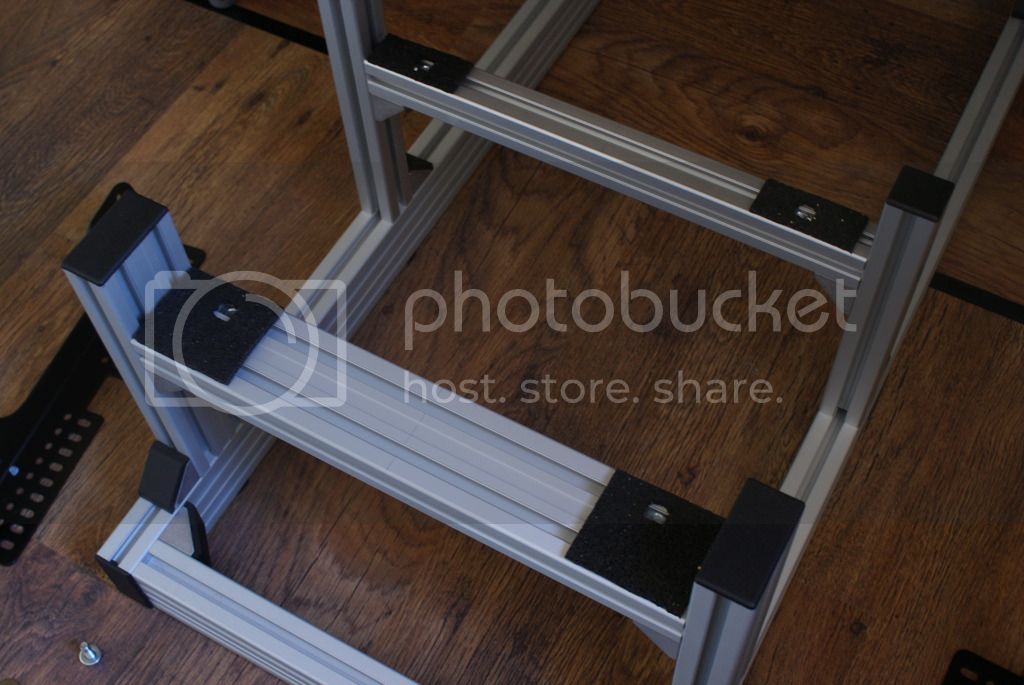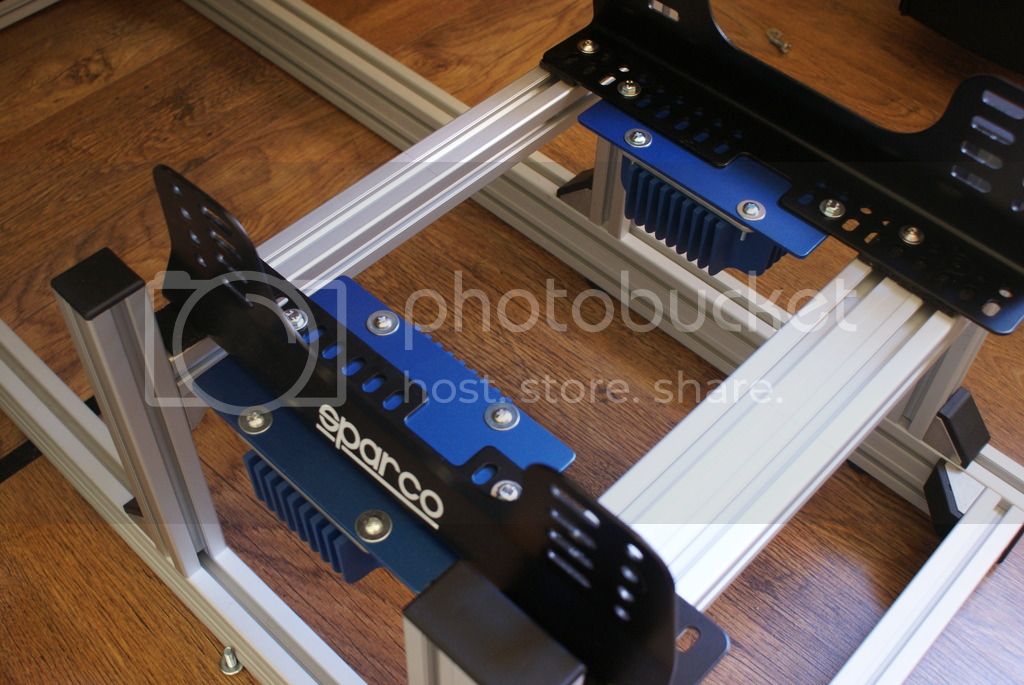- 532

- Canada
I proved with Trying Various mounting methods, Vertical, Horizontal, All feet mounted, Only 2 feet mounted with Isolators and without and in the end the Mini LFE frame Sucks compared to the gamer2 frame Side by side.
@grog, interesting and nice rig....
I have a query as your first method used the upright mount holes of the mini lfe, the main body of the piston was not in contact with the metal surface below the piston.
All 3 feet can be used to transfer the energy. I think that certainly would make a difference with what you have now. Basically, you had a vertical piston transferring its energy via its slim back metal plate attached horizontally.
Your current application does help transmit the energy better and for the energy to pass through where you want it to be felt with fairly good proximity. Yet I'm curious as it still does nothing however to prevent vibrations traveling through the whole frame and not sustained in the seat/pedals.
If you had all feet of the mini lfe getting contact and mounted directly on top/below. This will direct the most energy so have it where you want it to be felt first as its first point of travel. Importantly though if we restrict the platform they are connected too by isolating it as best possible from the rest of the frame then this way you ensure you have:
1) good contact with all feet
2) direct placement for best possible strength
3) dampen slightly with rubber type cushioning to avoid metal pinging
4) isolated platform maintains better/longer the energy by greatly reducing the tactile leaking
Tactile is just like water, it will fill and it will flow. Therefore we can direct this flow and restrict how or where it may go.
Yeah I remember your issue Nick, was driving you mad, though dont recall you sharing much on building a proper isolated frame with good dampening material below the units for your seat, (harder with motion too). As mentioned, I know the clamp makes very good contact and not just on one face/surface. I may be wrong, been wrong before so even if I assume it is more to do with the clamp than the extended arm kinda curious.
My own units are attached to clamps that surround my steel tubing with either double or triple bars (no arm) and also works great. This does not mean you cant get good results the traditional way as @HoiHman and others have done so with metal builds and good isolation. IIRC he even showed with vibration app at the time the improvement it made.
It may be that installing the typical way on one sufrace with some metals yes requires more wattage compared to BK clamp to get similar results.
Would find it fascinating if someone did tests and out of curiosity to replicate what an arm does.
If adding slight up/down possible motion to a unit via small springs or foam/rubber underneath to give a small amount of travel and not just bolt to bare steel/metal is any improvement or not.
This issue also seems less of a factor with people using wood or MDF builds.












Henk nice to hear from you and see you posting as you can tell I still like to tinker with this topic...
Get what your saying about the seat and it being a metal bucket basically so the effects should be direct but curious why then you want more volume especially with your good wife already complaining lol.
Easily spent over 100 hrs looking/monitoring effects in Assetto Corsa over the summer and getting a better grasp (finally) from actual experience using it. More to do but again the lack of others seemingly seeking to get the most out of it makes me believe most people are happy to settle with autotune or fairly basic profiles. Again my flaws in complicating things, me being an oddball, as things seem fine for most folk as they are.
Anyways thought by now you could have had some better isolation/sound deadening solutions to keep the wife happy. Especially a man with your creativity and skills lol. You never did get that full-size LFE neither and show the wife who's the boss.

I have a test for you to try, unplug your BK Advance from Simvibe EM. Split your audio out going to speakers etc and connect your BK Advance to use it. Run Assetto Corsa (with Simvibe too) but set Assetto Corsa Engine audio sound/effect to (6-8) and Surfaces to (8-10). Select the racing Corvet and tell me what you feel!
Sorry mate, i only race in VR with sound comming from headphones in the rift (USB audio). Besides thats i'm now currently using my audio soundcard for the simvibe chassismode. VR is a game changer, you should really try it if you get the chance.



Mr Latte
Thank you very much for the very detailed response!
If I am clear on what you are suggesting, the following would make for a better experience than what I originally proposed:
Simvibe: EM mode
Seat:
Buttkicker LFE (full size) low frequency
Transducer for high frequency
Pedals: Buttkicker mini or transducer
Amp: Emotiva 5 channel
2 channels bridged to power LFE
1 channel for seat transducer
1 channel for pedals transducer
1 channel for future shifter transducer
Questions regarding the combo LFE+transducer on the seat:
1. Would the LFE and smaller transducer need to be mounted on seperate plates to avoid vibrations bleeding into one another?
2. Would they each be driven by the same sound card output: y-cable from the sound card to 2 inputs on the amp?
3. I assume I would need an amp that can support a crossover frequency to split frequency to LFE vs transducer?
4. Sound is a problem for me so can you recommend a quiet transducer for the high frequencies on the seat?
5. Pedals: buttkicker mini or transducer to match the seat?
Thanks again... love this stuff!
matt33w





I doubt the Emotiva would power the LFE fullsize and other units.
@Mr Latte at least in my case : bottoming out is not a hz related issue but volume related when different effects are combined. For example: In chassismode i have roadbumps and speed based white noise enabled.
I have the volume set that each effect when applied solo does not cause any bottoming out, however when i run at high speed with both effects enabled i do get some bottoming out because the 2 effect combined put out a bit too much volume occaisionally.
